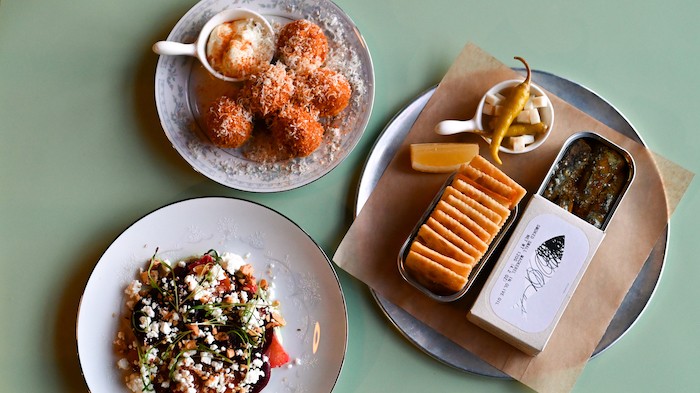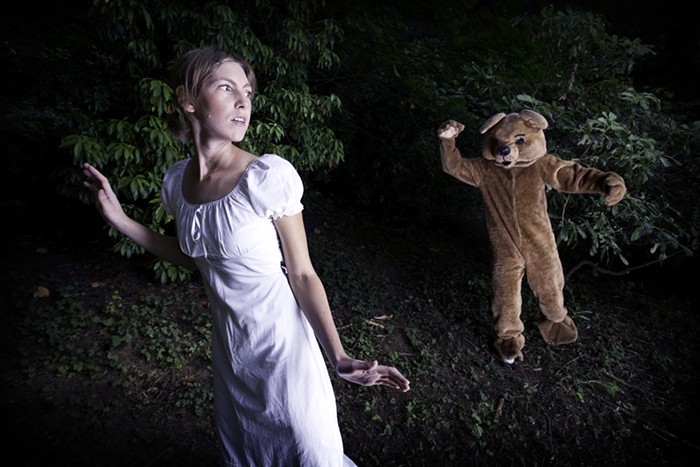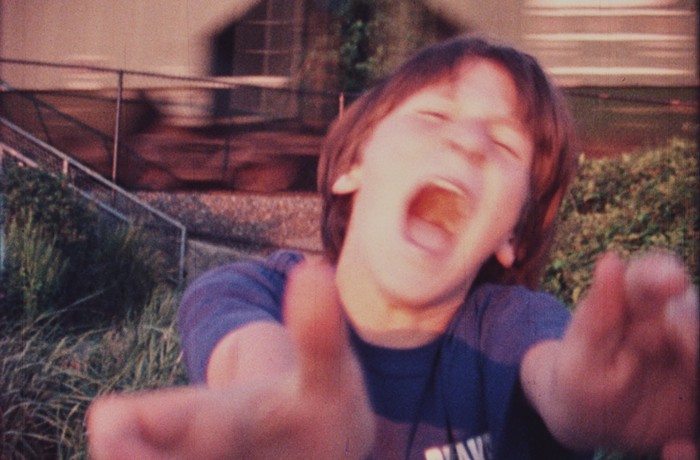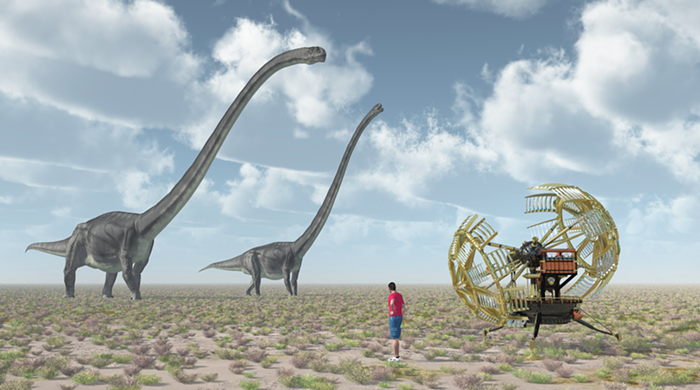I THOUGHT I was art walkin' on First Thursday... but am I hallucinating the apple-green grandeur of a giant fiberglass pitcher plant? There's an info sheet, so no, the magic is real. Recently installed in the Pearl's arts blocks and hotly debated, the plant and its colorful companions in Dan Corson's Nepenthes definitely have a "good side," their east face, and a "bad side" to the west that allows an unseemly peek of white hardware from their graceful spouts. Neighboring Butters Gallery has called them "lava lamps," but their solar glow is more futuristic than retro.
I head into Butters (up an apple-green stairwell—oh no! The menace is spreading.) to see what art they do approve. Per usual, it's naturalist abstraction and tricky technique. Marlana Stoddard Hayes has used doilies to stencil jellyfish forms under the surface of gray-blue sun-dappled seawater. Through some mad alchemy, Elise Wagner has turned encaustic into rusty steel. And against all odds, Frank Hyder has under-painted some koi on glass that look like koi, but not in a clichéd way. Michael Kessler's black watercolor splashes on panel evoke a birch forest, while Monroe Hodder's large canvas, raggedly striped with bright colors, fondly conjures my old Guatemalan backpack. So colorful, so lovingly busted. On to Charles A. Hartman Fine Art.
Rachel Davis' This Fleeting World show features purposely wonky ink illustrations that offset intricate doodles of pagodas, skyscrapers, factories, and suspension bridges with clouded gray masses of mountain and smoke. Selective color use and ample negative space give the eye plenty of room to play. One unidentified but repeated motif on Davis' hillsides is a pod-like sphere marked with an "x." I ask the artist what it is, and she admits it's a symbol: "Of buried histories, things that are not talked about but are part of the landscape." A second take at the pictures with this in mind reveals a minefield of portent secrets.
George Johanson wasn't born yesterday, and this is evident in his deceptively simple Recent Monotypes at Augen Gallery, from his figures' old-timey attire to the way the barest black daubs on white paper set a complete scene. Shimmering waves surround boats, sailboards, and expressive characters like a strongman and a lineup of pageant-ready bathing beauties. Far from naïve, Johanson must have pushed through an exploration of complexity and out the other side, until, like Hemingway, a few lines describe all. Then there's Andy Warhol's "Saint Apollonia," replicated four-fold in rotating hues of red, peach, gold, black, and periwinkle. With a Mona Lisa-like deadpan, she holds a set of tongs that I first assumed pinched a sugar cube—but nope, turns out it's a tooth. The patron saint of dentistry and a legendary victim of tooth-pulling torture, she's like a morbid Catholic Tooth Fairy. Way-more-famous Warhol "Marilyn" took one look at her and ran, as, instinctively, will I. Maybe I'll climb into a giant glowing pitcher plant and hide.













